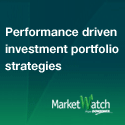Consider this: You’re twenty-one years old, fresh out of school and starting a career. What are your saving and investing goals: save up for a trip to Europe, buy a car, or get a head start on your retirement portfolio?
According to a recent poll from Investors Group, Canadians aged 18 to 34 were among the least likely to put away (at 29 per cent, compared to the national average of 36 per cent) money away in either an RRSP or TFSA during RRSP season. While retirement may be the last thing on the mind of a twenty-something, the benefits of investing – and staying invested – as soon as possible, are well documented.
Witness the magic of compounding in the 2 instances below:
Mary invests $2,000 at the beginning of each year between the ages of 21 and 29, for a total of $18,000 over nine years. Assuming a pre-tax return of 8%, by age 65, she will have $398,805 in savings.
Lynn also invests $2,000 at the beginning of each year with the same pre-tax returns, but starts later at age 30. To get near Mary’s total savings by age 65 ($372,204), Lynn will need to invest nearly four times as much - $70,000 over 35 years.
“Starting to invest early is like the tortoise and the hare: slow and steady wins the race,” says Gaétan Ruest, financial planning expert eith Investors Group. “Giving your savings a head start while you’re young can give you greater flexibility to invest in higher-risk vehicles and the potential to generate greater returns in the long term.”
Having being afforded the opportunity to interview Gaétan, we jumped at the chance. Check out the interview below.
Biography: Gaétan is an actuary who works in Strategic Investment Planning at Investors Group. He directs the Symphony Asset Allocation Program and assists with solutions to complex investment planning issues.
Q: What are the potential challenges (and what do you think can be changed to remove these obstacles) faced by younger Canadians in saving for the future?
A: Our RRSP Exit Poll found that younger Canadians trail older generations when it comes to saving habits. Those aged 18 to 34 were among the least likely to have contributed to an RRSP for the 2009 tax year (29 per cent vs. 36 per cent nationally), and as of March 2010 they were least likely to have opened a TFSA (23 per cent vs. 32 per cent across all age groups).
The most widespread challenge for younger Canadians looking to save and build their assets is that they don’t have significant assets to invest. Typically just coming from school and just starting their careers, they don’t have a lot of saved assets and often have student loans and accumulated debt. In addition, they often aren’t very knowledgeable on the right way to invest what little they may have. So instead, many may choose to do nothing.
The best way to overcome these obstacles is to learn what options are available and will best suit your personal situation. Working with a financial advisor can help and often they’ll offer consultations at no cost. I’d encourage anyone to take this opportunity regardless of age. Setting up a good plan when you are young is much better than setting up a good plan when you are close to retirement. Starting young can give you a lot of flexibility in deciding how you want to retire and when.
Q: What are some ways for younger Canadians of finding extra money to save?
A: Many young Canadians have already accumulated debt. School loans, auto financing and furnishing their new apartments can add up to a significant amount of debt with interest payments that leave little room for savings and investments.
First, consider debt consolidation, which will help drive down your interest payments. Also ensure that you are paying down the higher-interest loans as quickly as possible, and leave lower interest loans like a government-sponsored student loan until last.
Also, consider investments that could yield enough interest to cover the interest payments on your debt. If you can make more from investments than what you owe in interest, it doesn’t always make sense to pay down debt immediately.
Family can also prove to be a great source of low-interest loans and often parents will see helping their children as a good investment. In fact, one of our recent polls found that 64 per cent of Baby Boomers continue to help their adult children financially. That may be a source of family discussions, but for many young Canadians that may be an option.
Q: Why is cumulative time in the markets so important?
A: There are three important factors that will determine the amount of money that you have at retirement:
1. How much you invest
2. What kind of return you can generate
3. How long your money will be invested
The last is the most important element as investment gains can be reinvested to accumulate more. If you start saving and investing early, the money that you have at retirement is mostly made up of returns and growth on those returns.
Here are some examples to illustrate this point:
- Mary invests $2,000 at the beginning of each year between the ages of 21 and 29, for a total of $18,000 over nine years. Assuming a pre-tax return of 8%, by age 65, she will have $398,805 in savings.
- Lynn also invests $2,000 at the beginning of each year with the same pre-tax returns, but starts later at age 30. To get near Mary’s total savings by age 65 ($372,204), Lynn will need to invest nearly four times as much - $70,000 over 35 years.
The longer you can let your money work for you, the more money you will have to retire with.
Q: Can you please elaborate on the benefits of compound investing?
A: Albert Einstein once said, “The most powerful force in the universe is compound interest.” He knew the importance of time and starting early.
When you invest your money, the key is to not take out any gains. Instead, re-invest your gains to allow your money to make more money.
Q: What are some examples of appropriate asset allocations for investors in their twenties?
A: It really depends on personal circumstance. What will the money be used for? If you’re saving for a down payment on a house, you know you will need the principal and gains soon and want to minimize risk. So you would look for low volatility, such as a money market fund, a GIC or bonds.
If your savings goal is 10 years or longer from now, like your child’s education or your retirement, you can take on significantly more risk. In some cases, 75-100 per cent of your investments can be in equities. This is more volatile over the short term but offers great rewards in the long run.
Q: How can younger adults use TFSAs to their advantage?
A: A great characteristic of a TFSA is that when you take the money out, you don’t need to pay any taxes on what you withdraw. With an RRSP you get a tax deduction when you put the money in, but you need to pay the taxes when you later remove the funds.
Young investors are typically in a low income environment, not making a lot of money and therefore not paying a lot of taxes. In this case a tax deduction from an RRSP doesn’t make a lot of sense. With a TFSA, the money will continue to grow and later on when you are likely in a higher income bracket, you won’t be taxed on your profits when you decide to cash in the TFSA.
Thank You, Mr. Ruest!
If you have a question on this or any other article on the blog, leave it in the comments. We’ll try our hardest to get them answered for you.
{ 3 comments }






